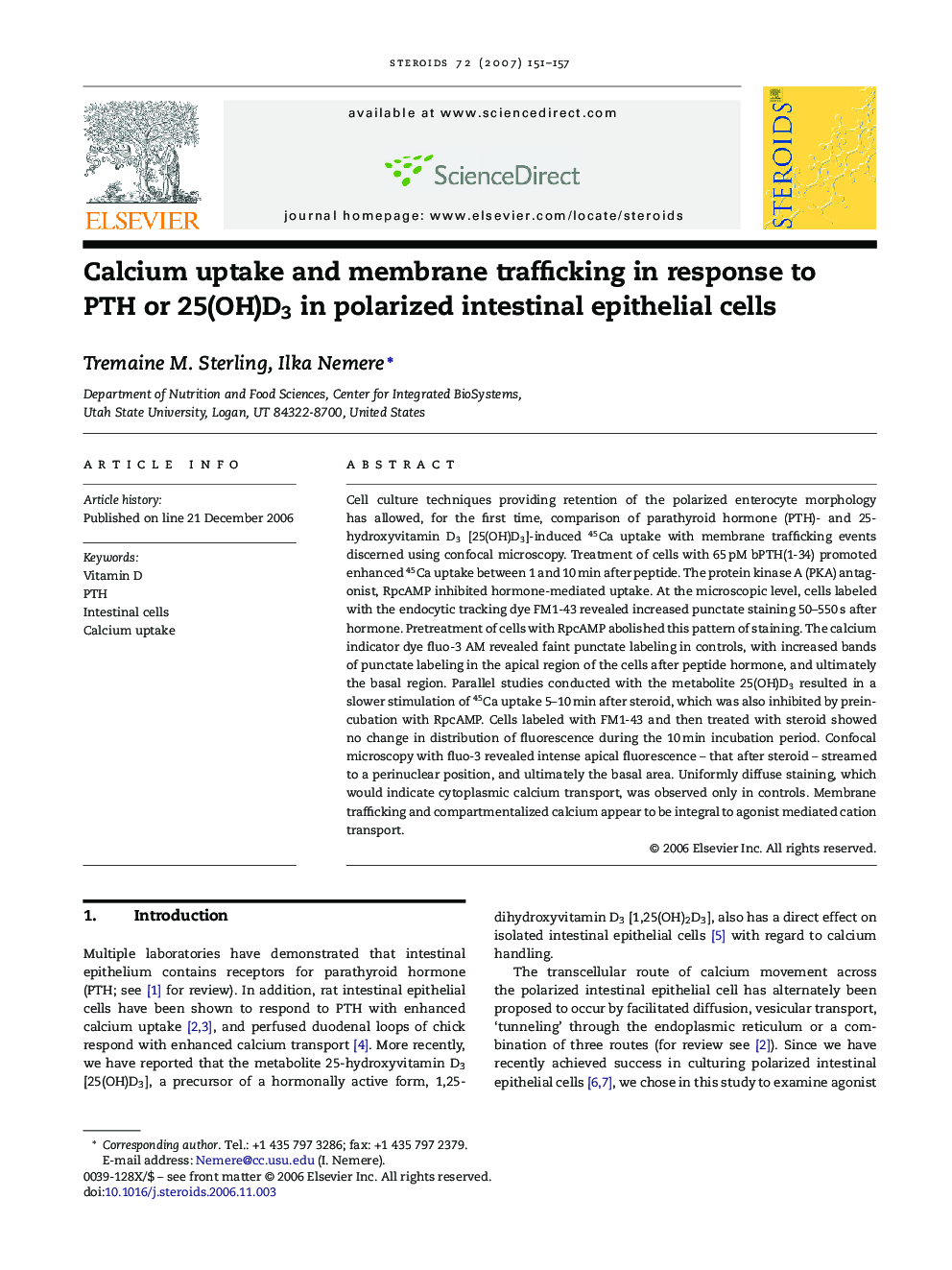| Article ID | Journal | Published Year | Pages | File Type |
|---|---|---|---|---|
| 2028837 | Steroids | 2007 | 7 Pages |
Cell culture techniques providing retention of the polarized enterocyte morphology has allowed, for the first time, comparison of parathyroid hormone (PTH)- and 25-hydroxyvitamin D3 [25(OH)D3]-induced 45Ca uptake with membrane trafficking events discerned using confocal microscopy. Treatment of cells with 65 pM bPTH(1-34) promoted enhanced 45Ca uptake between 1 and 10 min after peptide. The protein kinase A (PKA) antagonist, RpcAMP inhibited hormone-mediated uptake. At the microscopic level, cells labeled with the endocytic tracking dye FM1-43 revealed increased punctate staining 50–550 s after hormone. Pretreatment of cells with RpcAMP abolished this pattern of staining. The calcium indicator dye fluo-3 AM revealed faint punctate labeling in controls, with increased bands of punctate labeling in the apical region of the cells after peptide hormone, and ultimately the basal region. Parallel studies conducted with the metabolite 25(OH)D3 resulted in a slower stimulation of 45Ca uptake 5–10 min after steroid, which was also inhibited by preincubation with RpcAMP. Cells labeled with FM1-43 and then treated with steroid showed no change in distribution of fluorescence during the 10 min incubation period. Confocal microscopy with fluo-3 revealed intense apical fluorescence – that after steroid – streamed to a perinuclear position, and ultimately the basal area. Uniformly diffuse staining, which would indicate cytoplasmic calcium transport, was observed only in controls. Membrane trafficking and compartmentalized calcium appear to be integral to agonist mediated cation transport.
